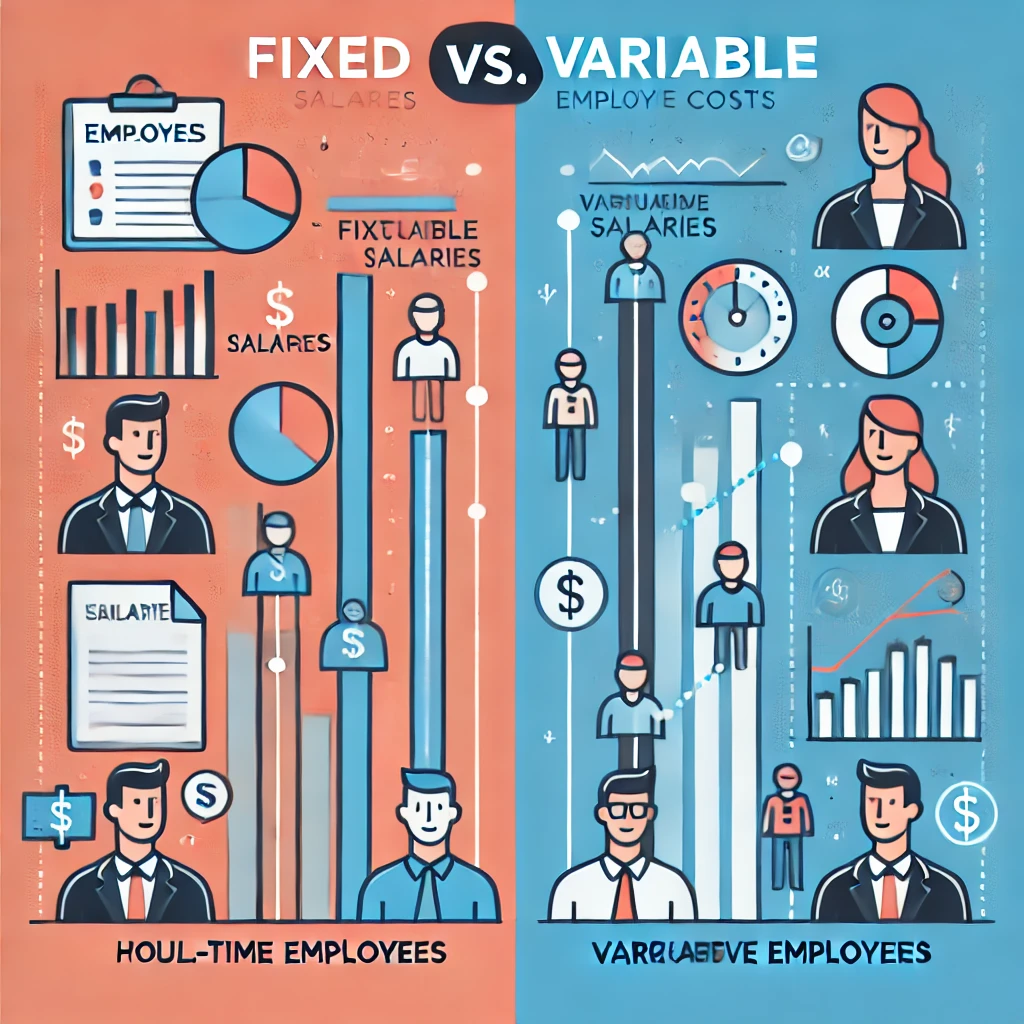
Introduction
One of the most common financial questions in business is whether employee salaries are a fixed or variable cost. This distinction is crucial because it affects budgeting, financial planning, and decision-making. Understanding whether salaries fall into the fixed or variable category helps businesses optimize their expenses and improve profitability. In this article, we’ll explore the nature of salaries, examine factors that influence their classification, and provide real-world examples to clarify this important financial concept.
What Are Fixed and Variable Costs?
Before diving into salaries, let’s define the two main types of business costs:
Fixed Costs
Fixed costs are expenses that remain constant regardless of business activity levels. These costs do not fluctuate with production or sales volume. Examples include:
- Rent or lease payments
- Insurance premiums
- Depreciation on equipment
- Salaries of permanent employees (in most cases)
Variable Costs
Variable costs, on the other hand, fluctuate based on business output. These expenses increase when production rises and decrease when production slows. Examples include:
- Raw materials
- Commissions
- Utility costs (in some cases)
- Wages for hourly workers
Are Salaries a Fixed or Variable Cost?
The classification of employee salaries depends on the type of employment and the structure of compensation. Let’s examine different scenarios:
1. Salaries as a Fixed Cost
In most businesses, salaried employees’ wages are considered a fixed cost. This is because:
- Salaries remain the same regardless of company output.
- Employees receive a set amount per month or year, regardless of productivity fluctuations.
- Examples include executives, managers, and full-time office staff.
For instance, a company paying its marketing director a fixed annual salary of $80,000 will incur this expense whether the company generates $500,000 or $5 million in revenue.
2. Salaries as a Variable Cost
Some salary structures have variable components that fluctuate based on performance or business activity. Examples include:
- Commission-based pay: Sales representatives often earn commissions, making part of their compensation variable.
- Hourly wages: Unlike fixed salaries, hourly wages depend on the number of hours worked.
- Overtime pay: Employees earning overtime contribute to variable costs.
- Seasonal or contract workers: Temporary staff hired during peak seasons are a variable expense.
For example, if a retail store hires extra cashiers for the holiday season, their wages are a variable cost because they increase with sales volume.
Hybrid Cost Structures: When Salaries Are Both Fixed and Variable
Some businesses use a hybrid salary structure, where a portion is fixed, and another portion depends on performance. Examples include:
- Base salary + commission: A salesperson earning $40,000 annually plus a 5% commission on sales has both fixed and variable components.
- Bonuses and incentives: Many companies offer performance-based bonuses, making salaries partially variable.
- Profit-sharing plans: Employees receive additional compensation tied to company profits, introducing a variable element.
Why Does the Classification Matter?
Understanding whether salaries are fixed or variable costs helps businesses in several ways:
1. Budgeting and Financial Planning
- Fixed salaries help in setting a predictable monthly budget.
- Variable wages need flexible financial planning to accommodate fluctuations.
2. Cost Control and Profitability
- If labor costs are too high, businesses may need to adjust staffing levels or restructure compensation plans.
- Companies with high variable labor costs can scale expenses based on revenue.
3. Decision-Making for Growth
- Businesses expanding operations must evaluate whether hiring permanent staff (fixed cost) or freelancers (variable cost) is the better option.
- A mix of fixed and variable compensation models can balance stability and flexibility.
Conclusion
So, are employee salaries a fixed or variable cost? The answer depends on the nature of employment and compensation structure. Salaried employees typically represent fixed costs, while hourly wages, commissions, and bonuses introduce a variable component. Understanding these distinctions allows businesses to manage expenses more effectively, optimize workforce costs, and improve profitability.
If you’re looking to optimize labor costs in your business, consider evaluating your salary structures and exploring flexible compensation strategies to balance financial stability and growth.

Andre Cuevas provides career insights, job search strategies, and professional advice to help individuals navigate the job market and achieve their career goals.





